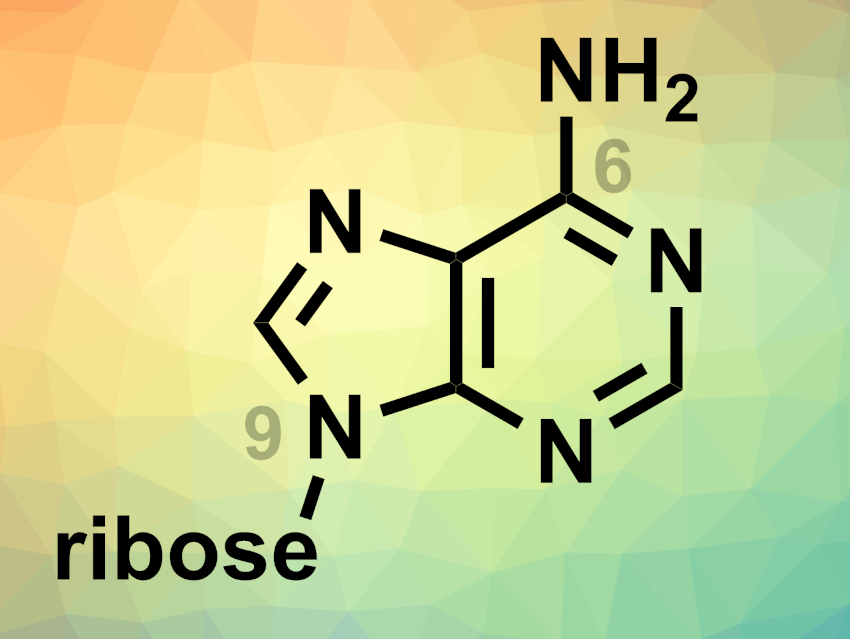The exact way life developed from non-living matter on Earth (abiogenesis) is not known in its entirety. There are hypotheses that could explain how pre-life chemical reactions gave rise to the compounds needed for the development of life. The RNA world, for example, is a hypothetical stage in the development of life based on self-replicating RNA molecules (before the evolution of DNA and proteins). However, the direct formation of a glycosidic bond between ribose and a nucleobase in RNA is challenging—sometimes called the “nucleosidation problem”. This is due to the low nucleophilicity at the respective positions of the nucleobases: N9 in purine bases (example pictured) and N1 in pyrimidine bases.
Xiao Wang, Nanjing University, China, and colleagues have investigated the potential role of titanium minerals in nucleosidation reactions on early Earth. The team discovered a regioselective titanium-catalyzed ribosylation method for the synthesis of purine and pyrimidine ribonucleosides. They found that titanium minerals such as rutile, anatase, and perovskites can allow for N9 selectivity in the generation of purine nucleosides. The same conditions can be used to realize the ribosylation of pyrimidines. The reactions between ribose and the respective nucleobases were performed using multiple wet/dry cycles to simulate the conditions on early Earth. N9-ribosylated adenine, for example, could be obtained in up to 14 % yield.
The work provides evidence for the possibility that ribonucleosides could be obtained directly and regioselectively from ribose and nucleobases. According to the researchers, this could provide useful insights into the long-standing nucleosidation problem in the chemical origin of life.
- Regioselective ribonucleoside synthesis through Ti-catalysed ribosylation of nucleobases,
Qian-Qian Chen, Ze-Run Zhao, Yeersen Patehebieke, Xiao Wang,
Nat. Synth. 2023.
https://doi.org/10.1038/s44160-022-00206-1





It is a great development, like to read more about the origin of life molecules.